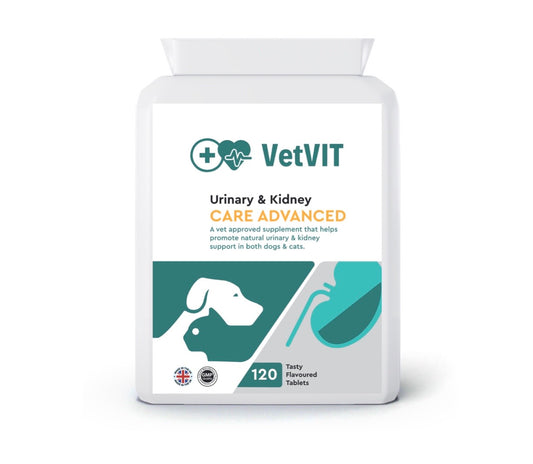Introduction to cat's teeth!
As cat owners, we all love to see our furry friends happy and healthy. But did you know that neglecting your cat's dental health can lead to serious problems? Dental disease is one of the most common health issues in cats, and it can cause pain, discomfort and even more severe diseases if left untreated. That's why teeth cleaning for cats is crucial for their overall well-being! In this ultimate guide, we'll cover everything you need to know about cat teeth cleaning, from when to start brushing their teeth, how often to do it, how to remove plaque naturally and much more. So let's get those purr-fect smiles shining!
Do I really need to keep my cat’s teeth cleaned?
Good dental hygiene in cats is essential for their overall health. Just like humans, cats can develop plaque and tartar buildup on their teeth, which can lead to gum disease, tooth decay and other serious oral issues. Dental problems might seem minor, but they can cause pain and discomfort for your feline friend.
Ignoring your cat's dental hygiene could also mean expensive vet visits down the line. Cats are notorious for hiding pain or discomfort until it becomes unbearable, so spotting early signs of dental issues is important.
Just because your cat seems healthy doesn't mean they're immune to dental problems. Even if you don't see any visible symptoms yet, it's still a good idea to keep up with regular teeth cleaning as a preventive measure.
Keeping your cat's teeth clean will ensure they stay happy and healthy for longer!
What age do cats get dental disease?
Cats, just like humans, are susceptible to dental disease at any point in their lives. However, it has been observed that the risk of developing dental issues increases as they age. Generally speaking, cats over three years old are more prone to dental diseases.
The primary reason for this is the accumulation of plaque and tartar on a cat's teeth over time. As your feline friend gets older, these buildups can harden and eventually lead to gum inflammation or gingivitis. Left untreated, gingivitis can progress into periodontal disease – a painful and potentially dangerous condition.
Despite the increased vulnerability with age, young kittens aren't completely immune either. They too can suffer from congenital tooth malformations or experience broken teeth due to accidents or rough play.
In essence, maintaining good oral hygiene is essential throughout your cat's life – regardless of their age – as prevention is always better than cure when it comes to safeguarding their pearly whites against potential diseases.
Is it too late to start cleaning my cat's teeth?
Cats are notorious for hiding their pain and discomfort, which makes it difficult to detect dental disease until it's too late. However, that doesn't mean you should give up on cleaning your cat's teeth altogether.
It is never too late to start a dental hygiene routine with your feline friend. Even if your cat has already developed dental problems, regular cleanings can help prevent further damage and improve their overall oral health.
Starting slow is key when introducing any new habit to your pet. Begin by getting them used to having their mouth touched with gentle strokes before moving onto specialized toothbrushes or finger brushes made specifically for cats.
If your cat seems hesitant or resistant at first, don't force the issue. Instead, try different flavored toothpaste or treats designed to promote healthy teeth and gums.
Remember that consistent effort over time will lead to success in keeping your cat's teeth clean and healthy. So don't hesitate – start now!
How often should you clean cat's teeth?
It is recommended to clean your cat's teeth at least once a day, but realistically it can be difficult to achieve this. If daily brushing is not possible, aim for at least two to three times a week.
The frequency of cleaning will depend on various factors such as the age and breed of your cat, their diet and lifestyle habits. Cats that consume wet food are more prone to dental problems than those that eat dry kibble. Similarly, older cats tend to have weaker teeth and may require more frequent cleaning.
When starting out with toothbrushing, take it slowly and let your cat get used to the process gradually. Set up a routine so they know when to expect their teeth cleaning session.
Aside from brushing, there are other ways you can keep your cat's teeth clean such as providing them with dental treats or toys designed specifically for oral health. These products help break down plaque buildup and freshen breath without requiring extensive brushing sessions.
In summary, aim for regular cat teeth cleaning sessions with your feline friend but don't stress too much if it's not always possible - there are plenty of other ways you can maintain good dental hygiene in cats!
How do you remove plaque from cat's teeth?
Plaque on a cat's teeth is a common problem that can lead to dental disease. While regular brushing and professional cleanings are important for maintaining your cat's oral health, there are also some simple steps you can take at home to remove plaque.
One effective method is using dental treats or chews that help scrape away plaque as your cat chews. Make sure the treat or chew is specifically designed for dental health and approved by your veterinarian.
Another option is using an enzyme based toothpaste, many of which don't actually require brushing. The additives in these products work by promoting healthy bacteria in the mouth, which helps break down plaque and prevent its buildup.
You can also try using a finger brush or soft-bristled toothbrush to gently scrub away plaque from your cat's teeth. Be sure to use pet-specific toothpaste as human toothpaste contains ingredients that may be harmful to cats.
Whatever method you choose, consistency is key when it comes to removing plaque from your cat's teeth. Aim for daily cleaning sessions and always consult with your veterinarian if you have any concerns about your cat's oral health.
How do you brush your cat’s teeth when they don’t like it ?
Brushing your cat's teeth can be a daunting task, especially if your feline friend is not used to it. But don't worry, with patience and practice, you can make the process much easier for both of you.
Firstly, start by getting your cat accustomed to having their mouth handled. Gently lift their lip and rub their gums with your finger for a few seconds every day until they become comfortable with this.
Next, introduce them to toothpaste by letting them smell and taste it from your finger. Once they are familiar with the toothpaste flavor, apply some onto a soft-bristled toothbrush specifically designed for cats.
When brushing their teeth, always use gentle circular motions on the outside surfaces of each tooth. Be sure to focus on the back molars where plaque tends to accumulate more frequently.
If your cat resists or becomes agitated during brushing sessions, try breaking down the process into shorter intervals throughout the day or distracting them with treats or toys.
It's essential to be patient when training cats as it may take several weeks before they feel comfortable enough during teeth cleaning sessions. With time and consistency in practicing good dental hygiene habits at home, you'll help keep those pearly whites shining brightly!
In cases where despite time and effort, the concept of brushing their teeth just is not an option, then consider using an enzyme based paste that will work without brushing. These products will often benefit from initially having your cat's teeth professionally cleaned, followed by daily use of these products.
Signs of dental disease and when to see a vet?
Just like humans, cats are also susceptible to dental problems. Dental disease in cats is one of the most common health issues that they face. However, cats cannot tell us when they have a toothache or any other dental problem, which makes it our responsibility as pet owners to keep an eye out for the signs of dental disease.
One of the first signs of dental problems in cats is bad breath. If your cat's breath smells foul, then it may be time to check their teeth and gums for any issues.
Another sign of dental problems in cats is difficulty eating or chewing food. This could be due to pain caused by gum inflammation or tooth decay.
If you notice your cat drooling excessively or pawing at their mouth frequently, this could also indicate a potential issue with their teeth and gums.
Additionally, if you see any brownish-yellow tartar buildup on your cat's teeth or redness and swelling around their gums, these are all red flags for potential dental problems.
It’s important to take note of these warning signs and schedule regular veterinary check-ups for your feline friend. Early detection can prevent small issues from turning into bigger ones which ultimately helps maintain good oral hygiene overall for the kitty!
Conclusion
To sum up, keeping your cat's teeth clean is crucial for their overall health and well-being. By following the tips and tricks outlined in this Ultimate Guide, you can ensure that your feline friend's oral hygiene needs are met.
From understanding when dental disease can occur to knowing how to remove plaque from your cat's teeth, we hope this guide has provided valuable insight into the world of cat teeth cleaning. Remember, prevention is key when it comes to dental issues in cats.
By incorporating regular brushing sessions into your pet care routine and seeking veterinary attention at the first signs of trouble, you can help keep your furry companion healthy and happy for years to come. So go ahead – give those pearly whites a good scrub!
Dr. Alan





